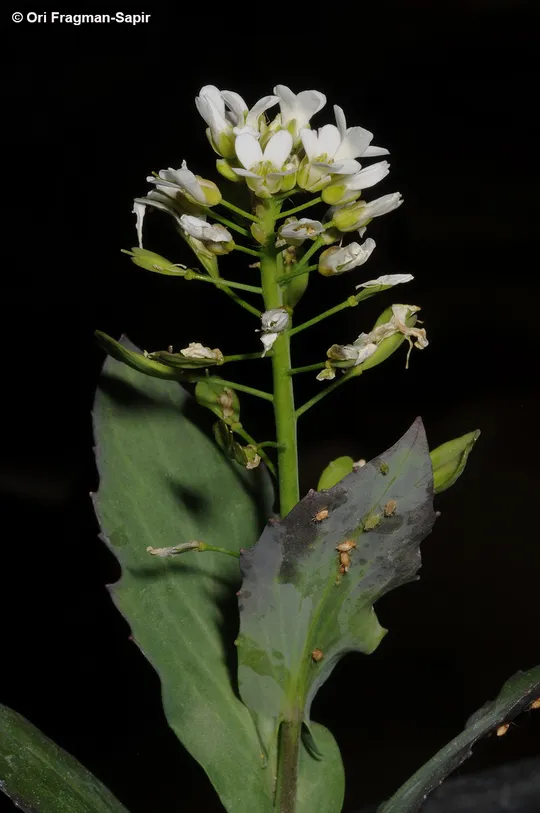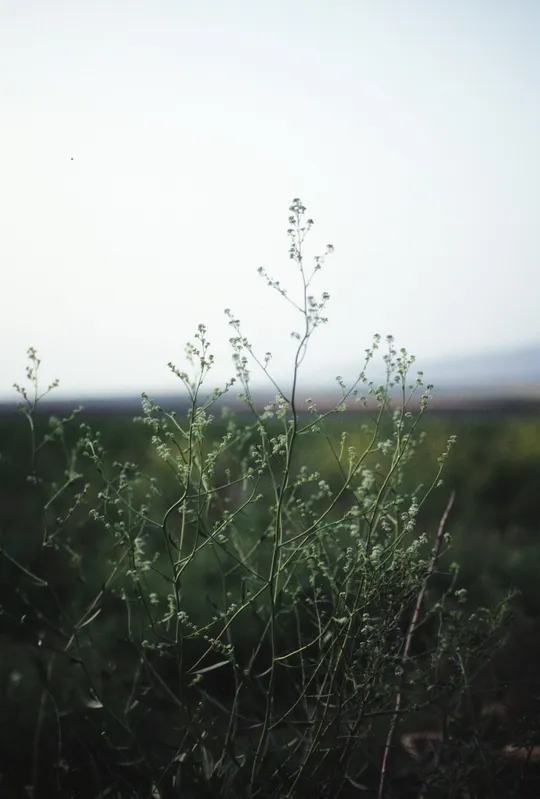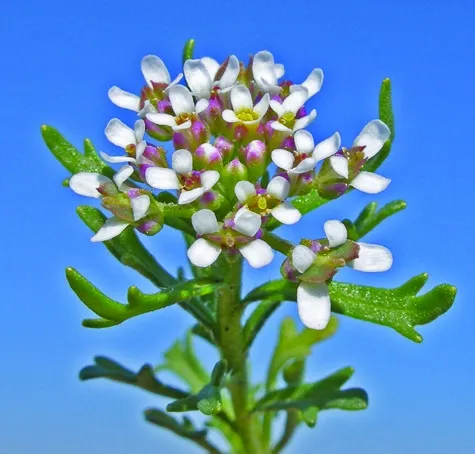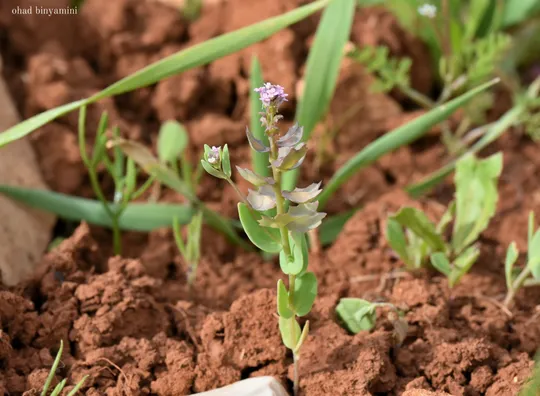Prostrate Pepperwort, Aucher Pepperwort
Lepidium aucheri
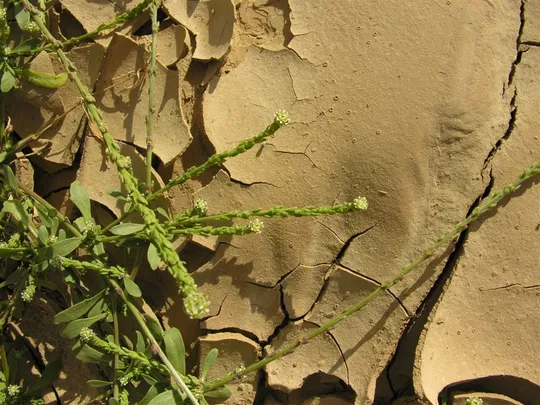
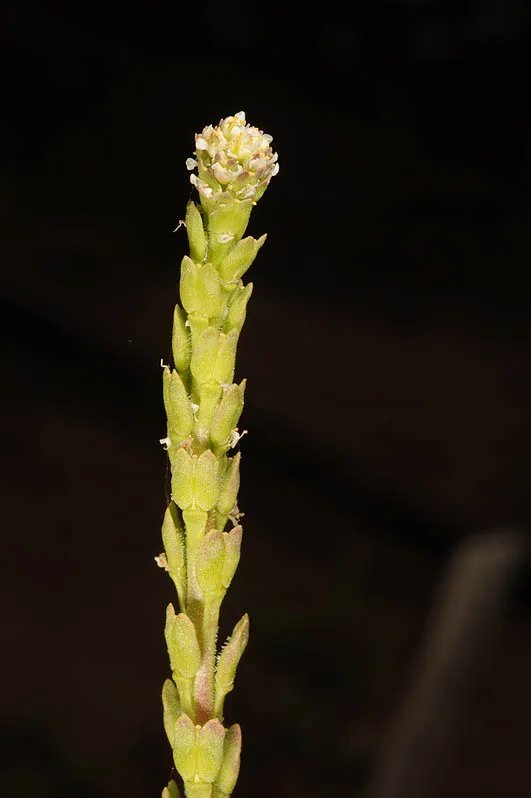
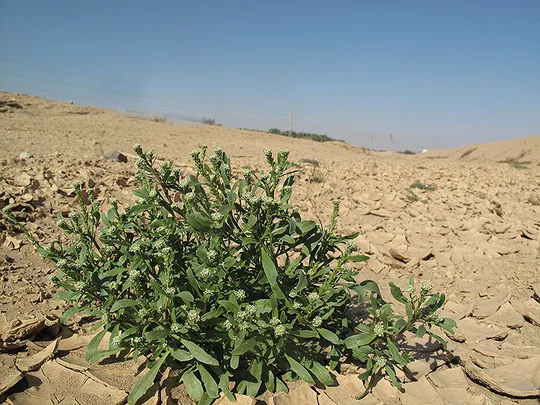
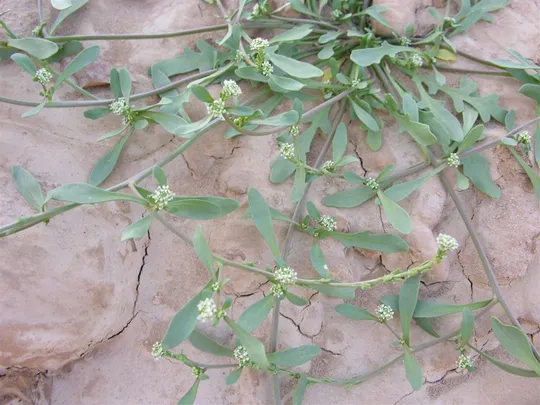
Lepidium
aucheri leaves are
edible and have a sharp taste; they are eaten by livestock and people in
Arabian countries (the Flora of Iraq).
Lepidium aucheri grows in the
southern Arava and is found at four sites – in Kibbutz Elot, in Wadi Roded,
near the Jordanian border and in Wadi Sha'alab. According to estimates there
are five sites in the country.
Slightly saline
loess plains in extreme deserts and at the edges of agricultural areas in the
same region.
The genus Lepidium,
one of the largest genera of the Brassicaceae (Cruciferae) family, is
almost cosmopolitan and has 175 species found in temperate and subtropical
regions (Mummenhoff et al., 2001). Five species grow in Israel – L. latifolium, a perennial plant of deep moist soil, with multiple
stems, small white flowers, and wingless fruit that is extremely rare in Israel
(see entry in this book); L. ruderale is an annual grass with many small
winged divergent fruits; it is an European plant and an invasive species in Israel
common in disturbed habitats. L. spinescens and L. spinosum are similar wetland species, with rigid stems and appressed fruit.
L. sativum is a cultured plant that appears
at random in Israel; it has wingless, not appressed fruit. In conclusion, all
the Lepidium species in Israel, with the exception of L. aucheri,
are Mediterranean plants with a characteristic erect stem. The genus Cardaria
is extremely close to the genus Lepidium and is sometimes included in
it. Molecular analysis of 73 Lepidium species shows that there are three
groups of species, one of which is Eurasian and includes L. aucheri (Mummenhoff et al., 2001). These researchers
found that the Lepidium species are close to each other morphologically
and genetically, occasionally even between different continents. This detail relates
to the fact that Lepidium seeds are slightly sticky and are also dispersed
over long distances by birds. Many species of Lepidium have two or four
stamens (instead of six stamens that are characteristic of Brassicaceae
(Cruciferae)) and sometimes small flowers that are often distinctive
of self-pollinating species. Apparently the speciation of the genus Lepidium is
relatively recent (Mummenhoff et al. 2001).
·
Lepidium aucheri
is restricted to the Arava region, particularly to the Elat area. In Israel it
grows in extreme desert conditions, in regions subject to long drought periods,
in which many annuals do not germinate at all. Thus, new populations could be
discovered in the future on other sites on which L. aucheri
has not yet been seen.
·
The population size
on each site varies from single plants to dozens.
·
The expansion of
agriculture in the southern Arava, prolonged and consecutive droughts and small
populations threaten the species. No information is available on the viability of
the Lepidium aucheri seed bank and on its regenerative
capacity under extreme conditions.
·
The Lepidium aucheri
sites are not located in nature reserves.
·
The species is
widely distributed and is probably not globally endangered.
The ecology of Lepidium aucheri
should be studied, particularly the long-term viability of
its seeds. At the same time continuous monitoring should be conducted at the
sites where L. aucheri has been seen,
to evaluate the long-term population viability. Seeds from populations in the
southern Arava should be collected to create backup populations in desert refuge
gardens.
Lepidium aucheri has a wide
distribution from the Middle East to Central Asia, growing in Kuwait, Saudi
Arabia, Egypt (including Sinai), southern Jordan, southern Israel, Syria, Iraq,
Iran, western Pakistan, Afghanistan and Turkmenistan.
Lepidium aucheri
is an extremely rare annual plant of the hot extreme desert of the southern Arava.
Israel is located at the eastern edge of its range.
Mummenhoff, K., Brggemann, H and J.L. Bowman. 2001. Chloroplast DNA phylogeny and biogeography of Lepidium (Brassicaceae). American Journal of Botany. 88: 2051-2063.
Current Occupancy Map
| 1000 squre meter pixel | 5000 squre meter pixel | 10000 squre meter pixel | |
|---|---|---|---|
| number of observations | 0 | 0 | 0 |
| in total pixels | 0 | 0 | 0 |
| Family | Brassicaceae |
| Classification | On the endangered species list |
| Ecosystem | Desert |
| Chorotype | Irano - Turanian |
| Conservation Site | Wadi Roded |
| Rarity |
1
4
6
|
|---|---|
| Vulnerability |
0
1
4
|
| Attractiveness |
0
0
4
|
| Endemism |
0
0
4
|
| Red number |
1
3.2
10
|
| Peripherality | E |
| IUCN category | DD EW EX LC CR EN VU NT |
| Threat Definition according to the red book | Vulnerable |
 Based on:
Based on:
